Sunday October 4, 2009, 7:30 pm
Los Angeles Filmforum presents
Bodies, Objects, Films: An Yvonne Rainer Retrospective (Part 1 of 8 ) – Yvonne Rainer in person!
At the Egyptian Theatre, 6712 Hollywood Blvd. at Las Palmas, Los Angeles
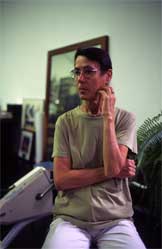
Yvonne Rainer, photo by Stefan RomerTonight’s interlocutor is Lynette Kessler, Executive Director of Dance Camera West
Over the course of our 2009-2010 seasons, Filmforum is proud to present a full retrospective of the media works of Yvonne Rainer. One of the most significant artists in dance and film of the last fifty years, Rainer now calls Southern California home for much of the year, so we will be honored to have her in person at several of the screenings. To make it more interesting, each appearance by Rainer will feature a Q&A led by a different interlocutor, to discuss with her varying aspects of her approaches to her art and life. We’ll start with her earliest and latest works, all connected to various performances. Tonight’s Q&A will be led by Lynette Kessler, director of Dance Camera West, to help bring it the relationship between these works and Rainer’s dance performances.
“I love the duality of props, or objects: their usefulness and obstructiveness in relation to the human body. Also the duality of the body: the body as a moving, thinking, decision-making entity and the body as an inert entity, object-like… oddly, the body can become object-like; the human being can be treated as an object, dealt with as an entity without feeling or desire. The body itself can be handled and manipulated as though lacking in the capacity for self-propulsion.” (Rainer, Works 1961-73, Halifax, Nova Scotia, Nova Scotia College of Art and Design, New York, New York University Press, 1974, p. 134)
On Yvonne Rainer:
When Yvonne Rainer made her first feature-length film in 1972, she had already influenced the world of dance and choreography for nearly a decade. From the beginning of her film career she inspired audiences to think about what they saw, interweaving the real and fictional, the personal and political, the concrete and abstract in imaginative, unpredictable ways. Her bold feminist sensibility and often controversial subject matter, leavened with a quirky humor, has made her, as the Village Voice dubbed her in 1986, “The most influential American avant-garde filmmaker of the past dozen years, with an impact as evident in London or Berlin as in New York.”
Rainer was born in San Francisco in 1934. She trained as a modern dancer in New York from 1957 and began to choreograph her own work in 1960. She was one of the founders of the Judson Dance Theater in 1962, the beginning of a movement that proved to be a vital force in modern dance in the following decades. Between 1962 and 1975 she presented her choreography throughout the United States and Europe, notably on Broadway in 1969, in Scandinavia, London, Germany, and Italy between 1964 and 1972, and at the Festival D’Automne in Paris in 1972. In 1968 she began to integrate short films into her live performances, and by 1975 she had made a complete transition to filmmaking.
In 1972 she completed a first feature-length film, LIVES OF PERFORMERS. In all she has completed seven features: FILM ABOUT A WOMAN WHO… (1974), KRISTINA TALKING PICTURES (1976), JOURNEYS FROM BERLIN/1971 (1980, co-produced by the British Film Institute and winner of the Special Achievement Award from the Los Angeles Film Critics’ Association), THE MAN WHO ENVIED WOMEN (1985), PRIVILEGE (1990, winner of the Filmmakers’ Trophy at the Sundance Film Festival, Park City. Utah, 1991, and the Geyer Werke Prize at the International Documentary Film Festival in Munich, 1991), and MURDER and murder (1996).
Rainer’s films have been shown extensively in the U.S. and throughout the world, in alternative film exhibition showcases and revival houses (such as the Bleecker St Cinema, Roxy-S.F.; NuArt-L.A; Film Forum-NYC, et al), in museums and in universities. Her films have also been screened at festivals in Los Angeles (Filmex), London, Montreux, Toronto, Edinburgh, Mannheim, Berlin, Locarno, Rotterdam, Creteil, Deauville, Toulon, Montreal, Hamburg, Salsa Majori, Figueira da Foz, Munich, Vienna, Athens (Ohio), Sundance, Hong Kong, Yamagata, and Sydney.
A half-hour video tape entitled YVONNE RAINER: STORY OF A FILMMAKER WHO… was aired on Film and Video Review, WNET-TV in 1980. THE MAN WHO ENVIED WOMEN was aired on Independent Focus, WNET-TV in, 1989, and PRIVILEGE on the same program in 1992 and during the summer of 1994.
In the Spring of 1997—to coincide with the release of MURDER and murder—complete retrospectives of the films of Yvonne Rainer were mounted at the Museum of Modern Art in San Francisco and at the Film Society of Lincoln Center in New York City.
In 2006 MIT Press published Yvonne Rainer’s memoir, Feelings Are Facts: A Life. She most recently presented new dance works at REDCAT in June 2009. Source: http://www.zeitgeistfilms.com/director.php?director_id=8
Two extended articles on Yvonne Rainer on Senses of Cinema
“Yvonne Rainer” by Erin Brannigan http://archive.sensesofcinema.com/contents/directors/03/rainer.html
“From Objecthood to Subject Matter: Yvonne Rainer’s Transition from Dance to Film” by Jonathan Walley http://archive.sensesofcinema.com/contents/01/18/rainer.html
Another biography of Rainer:
http://people.wcsu.edu/mccarneyh/fva/R/YRainer_bio.html
October 4:
Five Easy Pieces: A compilation of five early short films made between 1966 to 1969:
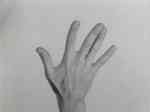
Hand Movie
Hand Movie (1966, 5:00, b&w, silent, 8mm to video)
Close-up of a hand, the fingers of which enact a sensuous dance. Camerawork by William Davis.
Volleyball (Foot Film) (1967, 10:00 b&w, silent, 16mm to video)
A volleyball is rolled into the frame and comes to rest. Two legs in sneakers, seen from the knees down, enter the frame and stand beside it. Cut to new angle, same characters and actions. Camerawork by Bud Wirtschafter.
Rhode Island Red (1968, 10:00, b&w, silent, 16mm to video)
Ten minutes in an enormous chicken coop. Camerawork by Roy Levin.
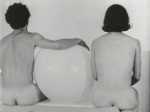
Trio Film
Trio Film (1968, 13:00, b&w, silent, 16mm to video)
Two nudes, a man and a woman, interact with each other and a large balloon in a white living room. Performed by Steve Paxton and Becky Arnold. Camerawork by Phill Niblock.
Line (1969, 10:00, b&w, silent, 16mm to video)
A blond woman (Susan Marshall) in white pants and shirt interacts with a moving round object and the camera. Camerawork by Phill Niblock.
After Many a Summer Dies the Swan: Hybrid (2002, 31 min, video)
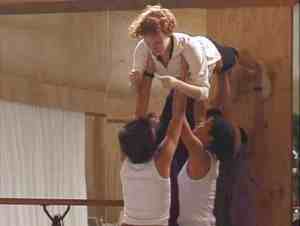
After Many a Summer
Yvonne Rainer combines a dance performance she choreographed for Mikhail Barryshnikov’s White Oak Dance Project in 2000 with texts by Oscar Kokoschka, Adolf Loos, Arnold Schoenberg, and Ludwig Wittgenstein—four of the most radical innovators in painting, architecture, music, and philosophy to emerge from fin-de-siècle Vienna. Charles Atlas and Natsuko Inue videotaped the rehearsals of the dance. The idea for integrating some of this footage with the Vienna material came partly from the title, which both elegaically and ironically invokes a passage through time and the end of a way of life, or, more to the point, aristocratic life. Thus the passage of Baryshnikov himself is also implicated—from danseur noble roles in classical ballet to his current interests in postmodern dance.
“Beyond the resonance of the title, however, the 21st century dance footage (itself containing 40-year-old instances of my 20th century choreography) can be read multifariously—and paradoxically—as both the beneficiary of a cultural and economic elite and as an extension of an avant-garde tradition that revels in attacking that elite and its illusions of order and permanency. Or, finally, each dance image can be taken simply as a graphic or mimetic correlation with its simultaneous text.
“Some may say the avant-garde has long been over. Be that as it may, the idea of it continues to inspire and motivate many of us with its inducement—in the words of playwright/director Richard Foreman—to “resist the present.'” —Yvonne Rainer
Upcoming in the Yvonne Rainer Retrospective:
November 8– TRIO A/ LIVES OF PERFORMERS (Rainer not present)
December 6 – THE MAN WHO ENVIED WOMEN with Rainer in person
This screening series is supported, in part, by the Los Angeles County Board of Supervisors through the Los Angeles County Arts Commission and the Department of Cultural Affairs, City of Los Angeles. Additional support generously provided by the American Cinematheque.

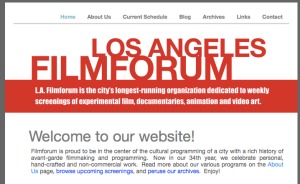


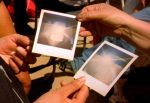




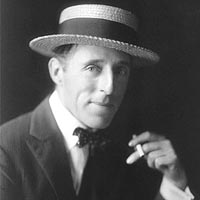

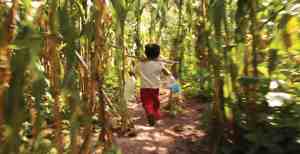



 Anaglyph Tom
Anaglyph Tom











